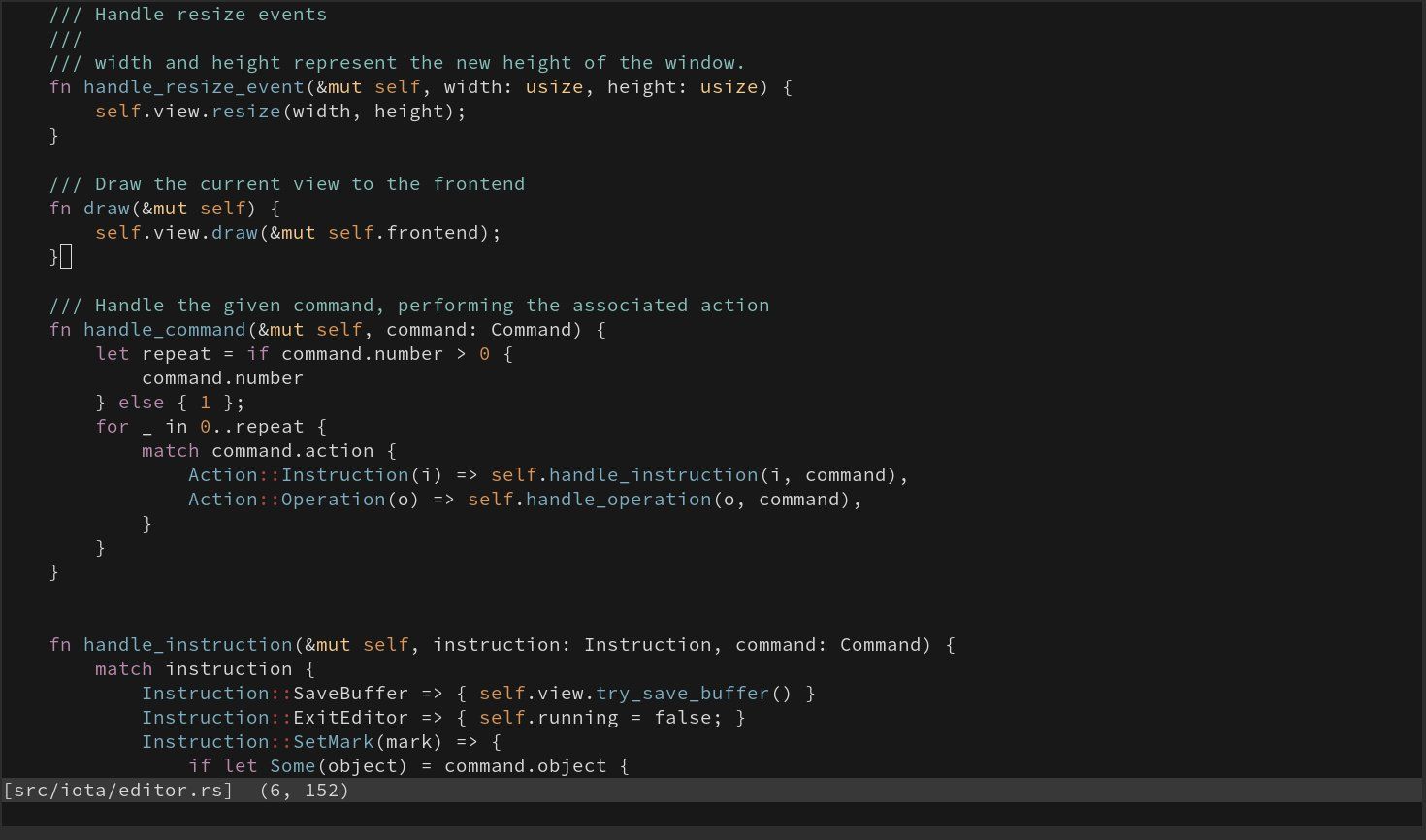
For the past few months I've been thinking about syntax-highlighting in
Iota. I did a good bit of research into how this is acheived in other editors to see how I should go about implementing it for myself.
Regex
What I found was that many text editors use a regex based system for syntax highlighting. A package might define a set of patterns which the editor uses to pull out and highlight particular parts of a blob of text. What I like about this approach is that it allows people to easily define & tweak new syntax highlighting patterns without having to dive into the depths of the editor itself.
I started off by investigating this approach in more depth. I came across a crate called syntect which provides syntax-highlighting using Sublime Text syntax definitions. The obvious benefit of this is that out of the box I could get highglighting for a whole range of languages. What I found however is that the highlighting was not quite granular enough for me. I wanted to be able to get pretty specific with what portions of text I could highlight, and the Sublime regex patterns just didn't operate at that level.
I'm used to using neovim for my day-to-day editing, and the highlighting it provides is pretty much the level that I am aiming for with Iota.
After exploring syntect some more, and looking around for other solutions I found myself getting a little discouraged by not finding something that was "up to scratch" - I was being pretty picky! I decided to park the regex-based approach for now with the view to revisit later, and instead began working on my own alternate approach.
My approach - a lexer
What I decided to do was to implement a very simple lexer. The lexer creates a stream of tokens from the source text and the editor uses those tokens to draw text in different colors. Each language definition can override the handler for a particular character in the source text and produce a different token than the default. For instance, when encountering the # character, the Rust lexer will being to parse an attribute (#[cfg(feature="foo")], for instance), whereas the Python lexer will beging to parse a single line comment.
The thing I like about this approach is that language lexers can get as granular as they want. The big downside is that defining syntax highlighting for a new language means writing a new lexer implementation. Which is a pain. There also is no way to configure the colors for various identifiers - they're all hard coded. This will definitely need to be changed in the future.
In reality, the regex approach is probably going to be the most feasible going forward, however I haven't yet found the best way to do it. For now I've added the lexer approach just so there is some highlighting function available, but I do plan on replacing it at a later time. My short-term goal for Iota is that it would be in place where I can use it on a day-to-day basis, and this brings me one step closer to that place. Once I achieve that goal, I'll shift gears into making it work the way it should.
Try it out
If you want to try out the syntax-highlighting, you'll need to enable that feature when building (it's disabled by default). First, get the latest source from Github using either:
$ git clone https://github.com/gchp/iota # for a fresh clone
$ git pull origin master # if you already have the source checked out
Then, you need to enable syntax-highlighting. You can do this by either building directly with cargo:
$ cargo build --release --features syntax-highlighting
Or by using the provided configuration script:
$ ./configure --enable-syntax-highlighting
$ make
I've also opened a ticket on the Github page to track improvements & ideas to syntax highlighting.